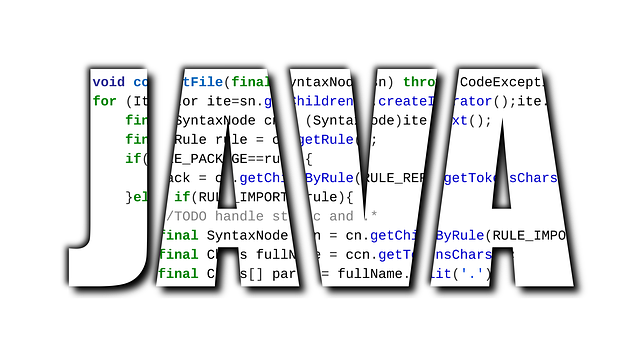Evolution of jRAT JAVA Malware – An analysis by Quick Heal Security Labs

jRAT (Java Based Remote Access Trojans) malware is not new but its activity has increased recently in the last few months and they are targeting various organizations. Per day, Quick Heal Security Labs identifies thousands of spam emails carrying weaponized JAR as attachments targeting users. These malicious JAR i.e., jRAT malware upon execution, result in infecting users. Let’s take a look at a detailed analysis of this malware.
Infection chain

Fig 1: jRat Infection Chain
Here is an initial infection vector which is a spam email. As it looks legitimate, the user is tempted to download and open the attachment.

Fig 2: Spam Email
Below is a list of attachment names observed in these spam emails:
- ITD_EFILING_FORM15CB_PR3.2.jar
- MVD_SHPMNT_VSL_0004048_pdf.jar
- Payment Swift Scan Copy 682017.pdf.jar
- SHIPPING DOCUMENTS PDF.jar
- SCAN DOC- 53862100.jar
- FINAL COMPLETE SET OF SHIPPING DOCS.jar
- PAYMENT_ADVISE_PDF.jar
- PAYMENT_APLICATION_PDF.jar
After extracting the parent JAR file, it shows some java packages containing some long random filenames which contain raw data and class files. We have observed that malware actors are evolving malicious JARs with numerous obfuscations patterns. Some of the patterns are as follows:

Fig 3: Different Obfuscation Patterns
Well-known decompilers failed to decompile the parent JAR file. Due to variation in obfuscation and encryption, (RSA, AES) makes static analysis more complex. Let’s see how malware behaves when it gets executed.
Execution of the parent JAR file drops two “.vbs”, two “.Class”, one “.Reg” and one “.dll” file at “%TEMP%” location. Every dropped file has a unique role in the infection cycle. Also, the parent JAR checks for a virtual machine using GlobalMemoryStatusEx() api which checks for the total physical and virtual memory available.
The parent JAR drops VBS files at %Temp% location with some random names. Also, it drops a JAR file with extension ‘.class’ at %Temp%. The parent JAR executes dropped the JAR file. The dropped JAR file is a jRAT malware.
Below images shows dropped vbs files:

Fig 4: VBS File to list down AV’s

Fig 5: VBS File to list down Firewall Products
Then jRAT malware executes VBS files using cscript.exe.


Fig 6: VBS File Execution by JAR
One of the VBS files enumerates a list of different firewall installed using WMI (Windows Management Instrumentation) functionality and the other one enumerates a list of third-party antivirus products using the same functionality upon execution.
The parent JAR also drops the “.Reg File” at %Temp% location and executes it using ‘reg.exe’. It creates registry entries of frequently used analysis tools such as ‘Procexp.exe’ ,’wireshark.exe’, ‘dumppcap.exe’ and some security products processes under “Image File Execution”. So, if any process gets started and if it has an entry under that key then the process gets killed.
Some registry entries are shown below:


Fig 7: Registry Entry under Image File Execution
The parent JAR executes actual jRat JAR file using java.exe. This jRat file is capable of communicating with a C&C server and can download executable payload.
To achieve persistence, it makes an entry into an auto-run registry so that it can launch itself when the system reboots.

Fig 8: Persistence Entry in Registry
jRat connects with CnC IP “213.183.58[.]42 ”. The below image shows the TLS-encrypted SSL traffic after infection. After decoding the TCP stream on port 3012, we found the blacklisted certificate which is associated with jRAT JAR.

Fig 9: TLS-Encrypted SSL Traffic
the below image shows the SSL certificate information and it has an entry in the SSL Blacklist:

Fig 10: SSL Certificate Information
Quick heal detection stats
Quick Heal Email Security generically detects such malicious attachments.
Detection Name: JAR.Suspicious.A

Fig 11: Quick Heal Lab detection stats
After analysing the entire jRAT JAR infection chain, we noticed that the malware authors have been consistently changing the obfuscators to evade signature-based detection and using anti-debugging and anti-VM’s techniques. Furthermore, finding and disabling security solutions using numerous ways show how it got evolved.
Indicators of compromise
- 213.183.58.42
- 781FB531354D6F291F1CCAB48DA6D39F
- 0B7B52302C8C5DF59D960DD97E3ABDAF
- 938CF1BA5F8BDB516B5617826E0B08A1
- 76985223E94342D0FAB80D8A4DB1707C
Subject Matter Expert
Prashant Kadam, Pawan Chaudhari | Quick Heal Security Labs



No Comments, Be The First!